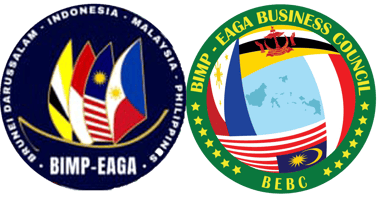Introduction
SABAH BLUE ECONOMY BUSINESS COMMUNITY (SABAH BEBC) is an initiative that is established by two Founders (Dr Raymond Alfred and Prof Ts. Dr Rayner Alfred). Sabah BEBC programme is developed as part of the contribution to BIMP EAGA Business Council (BEBC Malaysia, Sabah Chapter)
Dr Raymond Alfred is currently served as the BIMP EAGA Business Council (Malaysia, Sabah) Chairman, through the nomination made by 2 chambers (namely SME Bumiputera Chamber of Commerce Sabah (SBCCS) and Kadazandusun Chamber of Commerce and Industry, Malaysia (KCCI)), and further appointed and endorsed by the Special Envoy, BIMP EAGA Sabah, Tan Sri Pandikar Amin Hj Muli. He is currently the Chief Executive Officer for Allyssa Research Group Sdn Bhd and Allyssa Certification Sdn Bhd.
Professor Ts. Dr Rayner Alfred is a distinguished Professor of Computer Science and an influential figure in the field of Artificial Intelligence (AI) and Advanced Machine Intelligence. Currently serving as the Director of the Creative Advanced Machine Intelligence Research Centre (CAMI) at Universiti Malaysia Sabah, he has more than 25 years of experience, making him a pioneer in his area of expertise. His work spans the intersection of academia, industry, and government, contributing innovative solutions to real-world problems. Professor Rayner’s exceptional work has earned him numerous awards, including the title of one of Sabah's Top 3 Scientists in 2023 and multiple gold medals at international innovation competitions. His leadership in organizing international conferences on computational science and AI has been instrumental in advancing global dialogue on emerging technologies. With his extensive contributions across academia, industry, and government, Professor Rayner Alfred continues to be a driving force in advancing AI, machine learning, and their applications in solving complex global challenges. His work not only shapes the future of AI but also creates tangible, impactful solutions that benefit society, particularly in the realms of environmental sustainability, smart agriculture, and healthcare.
Founder




Empowering Business in BIMP-EAGA
The Sabah Blue Economy Business Community (SBEBC) fosters economic development, enhances cooperation, and advocates for policies that benefit our members while contributing to the overall growth of the State of Sabah including other BIMP-EAGA regional area.


Our Mission
Our Vision
The SBEBC Programme was established in 2023, with the aim to connects private business sectors (partnered with project investors) with government, at the same time addresses the BIMP EAGA BUSINESS COUNCIL’s member concerns, shares information, and raises funds to protect mutual interests, driving sustainable economic growth in the region.
Economic Growth
Fostering cooperation and prosperity in the BIMP-EAGA region. The economic growth of Sabah, a state in Malaysia, is influenced by a combination of factors, including its natural resources, infrastructure development, government policies, and external market conditions. Here are the key factors:
1. Natural Resources
Agriculture and Palm Oil: Sabah is a major producer of palm oil, which plays a significant role in its economy. Rubber, cocoa, and other agricultural products also contribute to the state's GDP.
Timber: Forestry and timber-related industries are significant, though they have been impacted by sustainable development policies.
Fisheries: As a coastal state, fisheries and aquaculture contribute significantly to local livelihoods and exports.
Mineral Resources: Oil, gas, and minerals like silica and limestone are important, with oil and gas being major revenue generators.
2. Tourism
Sabah's rich biodiversity, including attractions like Mount Kinabalu, the islands of Sipadan and Mabul, and its rainforests, attract both domestic and international tourists.
Ecotourism and cultural tourism linked to indigenous communities also contribute to the state's economy.
3. Infrastructure Development
Roads, Ports, and Airports: Improvements in connectivity through projects like the Pan Borneo Highway are crucial for trade and tourism.
Energy and Utilities: Availability of power and water resources influences industrial growth.
4. Government Policies and Initiatives
The Malaysian government and the state administration often implement development programs such as the Sabah Development Corridor (SDC) to boost economic growth and attract investments.
Special economic zones and incentives for investors in sectors like manufacturing and services drive industrialization.
5. Manufacturing and Industrialization
Agro-based industries, especially palm oil refining and rubber processing, play a key role.
Emerging sectors like shipbuilding, petrochemicals, and electronics manufacturing are growing due to investment incentives.
6. Foreign Direct Investment (FDI)
Strategic location near major trade routes makes Sabah attractive for FDI, especially in oil and gas, tourism, and manufacturing.
7. Labor Force and Human Capital
Availability of skilled labor influences industrial and service sector growth.
Education and training initiatives by the government and private sector impact productivity and innovation.
8. Global Market Dynamics
Fluctuations in commodity prices, such as palm oil and crude oil, have a direct impact on Sabah's economy.
Exchange rates and demand from trading partners like China, Japan, and other ASEAN countries also play a role.
9. Sustainability and Environmental Management
Environmental policies related to deforestation, wildlife conservation, and sustainable tourism influence economic activities and foreign investments.
10. Challenges and Opportunities
Challenges: High dependence on commodities, rural-urban development disparities, and vulnerability to climate change.
Opportunities: Diversification of the economy into sectors like renewable energy, digital economy, and sustainable tourism.
Sabah's economic growth depends on balancing resource-based development with diversification into new sectors, fostering sustainability, and ensuring inclusive growth across urban and rural areas












Community Insights
Discover how Sabah BEBC initiates project, fosters business growth and collaboration with Government Sectors, Investors and Project Partners in BIMP-EAGA region.
Sabah Blue Economy Business Community
Fostering economic growth in BIMP-EAGA region.
Connect
Support
+6016-883-7168
© 2024. All rights reserved.
